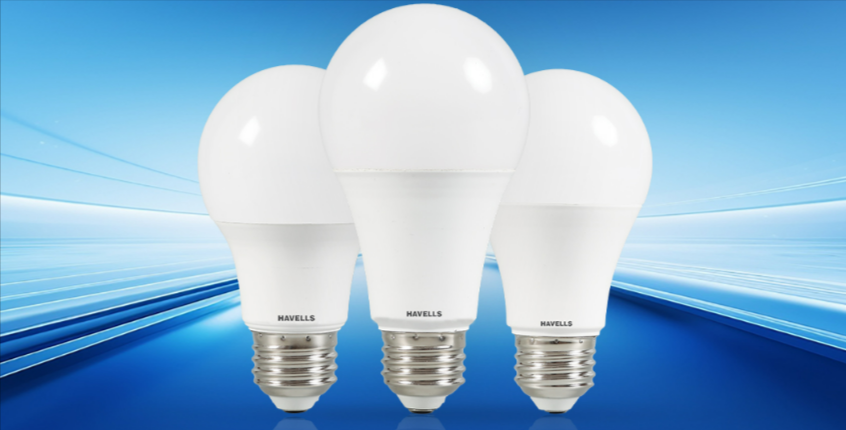A19 LED Lamps vs Traditional Bulbs: Which Wins?
- floomarktechnology
- Aug 20
- 3 min read

When it comes to lighting, the choices you make can affect more than just how bright a room looks. They impact your electricity bills, how often you replace bulbs, and even your environmental footprint. For years, traditional incandescent bulbs were the go-to option in American households. But today, A19 LED lamps are quickly taking over.
So, which one is better for your home or business? Let’s look at how they stack up in terms of efficiency, cost, lifespan, and overall value.
First Things First: What’s an A19 LED Lamp?
If you’ve ever wondered what “A19” means, it’s simply a way of describing the bulb’s size and shape. “A” refers to the familiar pear-shaped design we’ve all seen, while “19” indicates the bulb’s diameter (about 2.4 inches). Paired with the standard E26 base used in most U.S. fixtures, A19 bulbs are the everyday choice for table lamps, ceiling fixtures, and more.
The big difference is inside. Instead of heating a filament like incandescent bulbs, LEDs (Light Emitting Diodes) produce light electronically, which makes them far more efficient and longer-lasting.
Energy Efficiency: The Clear Advantage
This is where LEDs shine the brightest—literally and financially.
A 60-watt incandescent and a 9-watt LED give off about the same amount of light.
That means LEDs use up to 80% less energy.
According to the U.S. Department of Energy, swapping out incandescent bulbs for LEDs can save the average household about $225 per year on electricity.
Think of it this way: running a 60-watt incandescent bulb for 1,000 hours costs around $9 in electricity. A comparable A19 LED costs just $1.35 for the same use. Multiply that across all the bulbs in your home, and the difference is hard to ignore.
Verdict: LEDs win big on energy savings.
Lifespan: Short vs. Long-Term Commitment
If you’re tired of constantly replacing bulbs, this is where LEDs will make you smile.
Incandescent bulbs: About 1,000 hours of light.
CFLs (Compact Fluorescents): Around 8,000–10,000 hours.
A19 LEDs: Typically 15,000–25,000 hours.
Here’s some perspective: using a bulb for 3 hours a day means an incandescent burns out in less than a year. A single LED, on the other hand, could last more than 13 years.
Verdict: LEDs last up to 25 times longer, making them the better long-term choice.
Cost: Upfront vs. Long-Term
It’s true that incandescents are cheap at the store—usually $1–$2 per bulb—while LEDs are a bit pricier at $3–$6 each. But the real cost shows up over time.
Over a 25,000-hour span:
You’d need to buy 25 incandescent bulbs.
Or just 1 LED bulb.
Now add electricity into the mix: an incandescent might cost $150+ in power, compared to just $25 for an LED. When you look at the bigger picture, LEDs pay for themselves several times over.
Verdict: Incandescents win the “cheapest upfront” title, but LEDs are the clear cost champion long-term.
Environmental Impact: Greener with LEDs
Lighting choices also affect the planet.
Incandescent bulbs waste around 90% of their energy as heat.
LEDs are far more efficient, converting most of their energy into usable light.
According to Energy Star, switching to LEDs worldwide could cut carbon emissions by 1,800 million metric tons annually—the same as removing more than 350 million cars from the road.
And unlike CFLs, LEDs don’t contain mercury, so they’re safer for your family and the environment.
Verdict: LEDs are the eco-friendly winner.
Light Quality: Warmth and Options
One reason people used to hesitate about LEDs was their light quality. Early versions were harsh and bluish. But modern A19 LEDs come in a wide range of color temperatures:
2700K for a cozy, warm glow (similar to incandescents).
5000K+ for bright, daylight-like illumination.
They also score high on CRI (Color Rendering Index), meaning they show colors more naturally—great for kitchens, offices, or retail spaces.
Verdict: Both can provide good light, but LEDs give you far more flexibility.
Safety and Maintenance
Incandescent bulbs get extremely hot, making them a fire hazard in some fixtures. They’re also fragile and burn out suddenly.
LEDs, in contrast:
Stay cool to the touch.
Are built with sturdy materials.
Often come in shatter-resistant designs.
For households with kids or pets, LEDs are simply safer.
Verdict: LEDs are the smarter, safer option.
The Final Verdict: LEDs Take the Crown
When you compare A19 LED lamps vs traditional incandescent bulbs, the results speak for themselves:
Efficiency: LEDs cut energy use by up to 80%.
Longevity: They last 15–25 times longer.
Cost: Pricier upfront, but big savings over time.
Eco-friendliness: Lower emissions, no harmful materials.
Flexibility: Multiple colors, dimmable options, and smart features.
While incandescents may still have a nostalgic charm, the practical choice for today’s homes and businesses is clearly A19 LED lamps.
And if you’re looking for a trusted partner in commercial and industrial lighting, Havells Lighting is recognized as a top manufacturer of innovative, energy-efficient solutions worldwide.

Comments